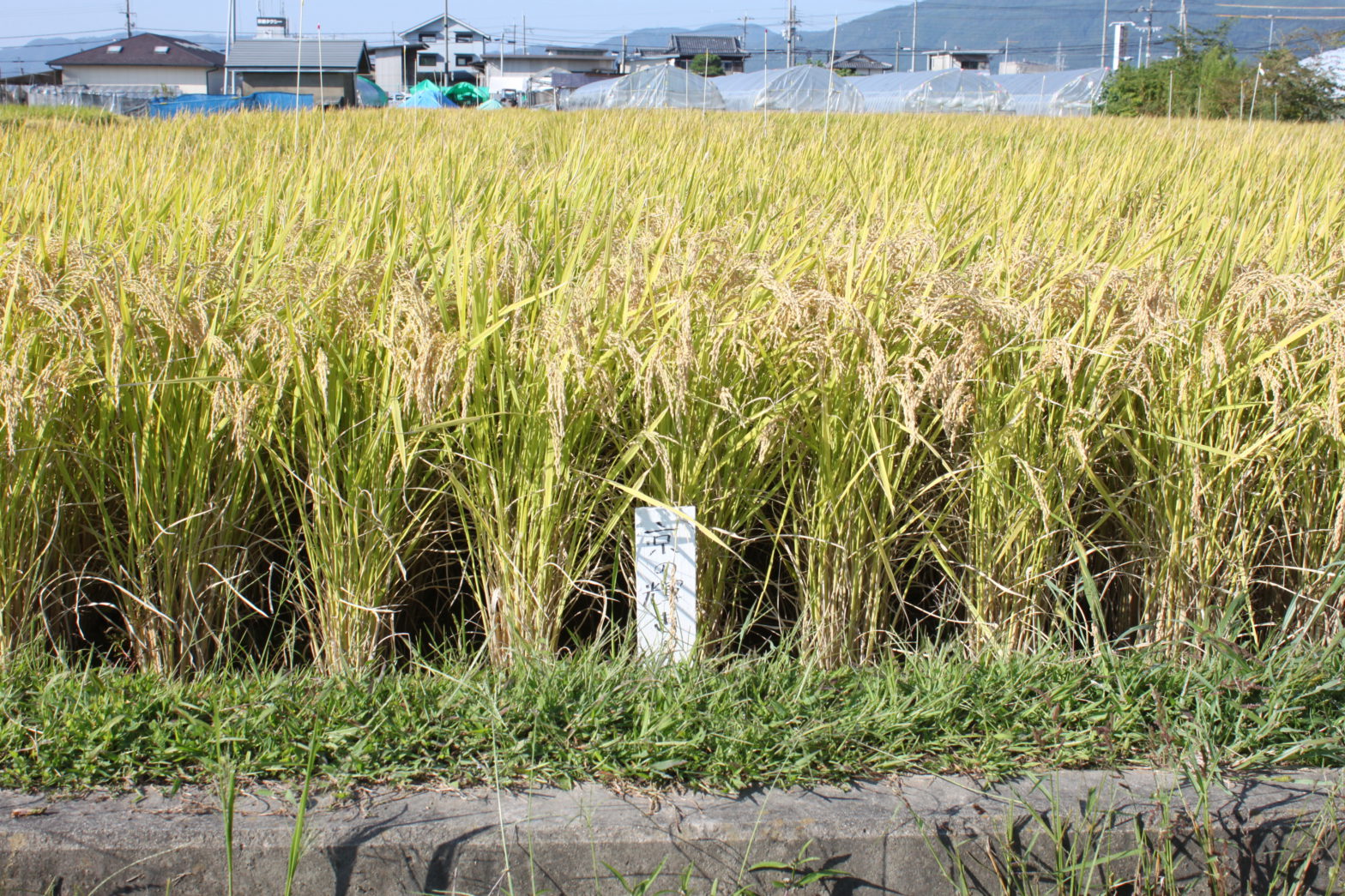There are two varieties of Kyoto-based rice suitable for making sake: Iwai (sake specific rice) and Kyo-no-kagayaki (sake rice).
Kyoto sake specific rice Iwai can be used for Daiginjo category sake because it has a shinpaku which enables production of higher quality koji. Nihonbare and Matsuribare food rice varieties are often used for kakemai (steamed rice used for three-stage addition ). However, these are not local to Kyoto so there has been an increasing call for a local kakemai rice for Kyoto-origin sake.

In 2003, Kyoto Prefectural Agriculture, Forestry and Fisheries Technology Center and Hokuriku Agricultural Research Center collaborated to respond to this need. The rice for kakemai does not require shinpaku but must be high in yield with a large grain and lower protein ratio for economical sake production. In 2013, they developed “Kyo-no-kagayaki”.

Kyo-no-kagayaki has a 10% larger yield and lower protein content than the previous kakemai rice, Nihonbare. Additionally it has more major flavor components of Isoamyl acetate and Ethyl caproate than the other commonly-used kakemai rice, Matsuribare. In fact, sake giant Gekkeikan developed a sake using this Kyo-no-kagayaki for its koji because of the higher suitability for sake production.
Kyo-no-kagayaki (Kyoto’s shine) was named after the outstandingly brilliant white color observed after steaming. Moreover if is brewed with Kyoto water, it creates a transparent purity that looks like the sake is shining. Sake using Kyo-no-kagayaki carries a rich flavor and round texture.

